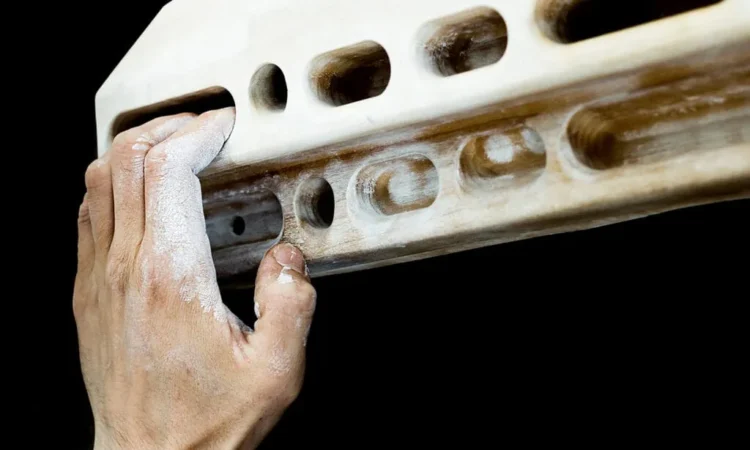
Rock climbing hangboards are essential training tools for climbers to improve finger strength and grip. The POWER GUIDANCE Rock Climbing Hangboard Portable Wood Hangboard is manufactured using a variety of materials, each with its own set of advantages and considerations.
Find below some of the common materials used for manufacturing rock climbing hangboards:
- Wood
Wooden hangboards are popular for their natural feel and aesthetics. They often have a comfortable texture that is easy on the skin, making them suitable for extended training sessions. Wood also offers a good balance between hardness and flexibility, which can provide a realistic climbing grip experience. However, the durability of wooden hangboards may vary depending on the quality of the wood and the protective finish used.
- Resin
Hangboards made from resin or plastic are lightweight and can be molded into various shapes and sizes, allowing for creative hold designs. Resin hangboards often feature a variety of hold types, catering to different training needs. They can be more affordable than wooden hangboards and are also easier to clean. However, some climbers may find that the texture of resin holds differs from natural rock, affecting their training experience.
- Polyurethane
Polyurethane (PU) hangboards are a type of plastic that is known for its durability and weather resistance. PU hangboards can replicate the texture of real rock more closely than some other materials, enhancing the training experience. They can withstand heavy use and come in a range of hold styles and sizes. PU hangboards are a popular choice among climbers who want a balance between durability and realistic training.
- Metal
Metal hangboards are less common but offer unique benefits. They are extremely durable and can handle substantial weight and wear. Metal hangboards often come with adjustable holds, allowing climbers to customize their training. However, metal hangboards can be quite hard on the skin and might not provide the same level of comfort during training as other materials.
- Hybrid Materials
Some hangboards combine different materials to provide a versatile training experience. For instance, a hangboard might have wooden holds embedded in a resin or plastic base. This combination allows for a mix of textures and grip styles, catering to a broader range of training goals.
Choosing a hangboard
When selecting a hangboard, climbers should consider factors such as their training goals, preferences, budget, and the compatibility of the material with their skin sensitivity. Each material has its own unique characteristics, and what works best for one climber might not be ideal for another. Reading reviews from other climbers and trying out different hangboards if possible can help in making an informed decision.
Final words
Climbers should assess their training needs, comfort preferences, and durability expectations when choosing the right hangboard material for their practice.




